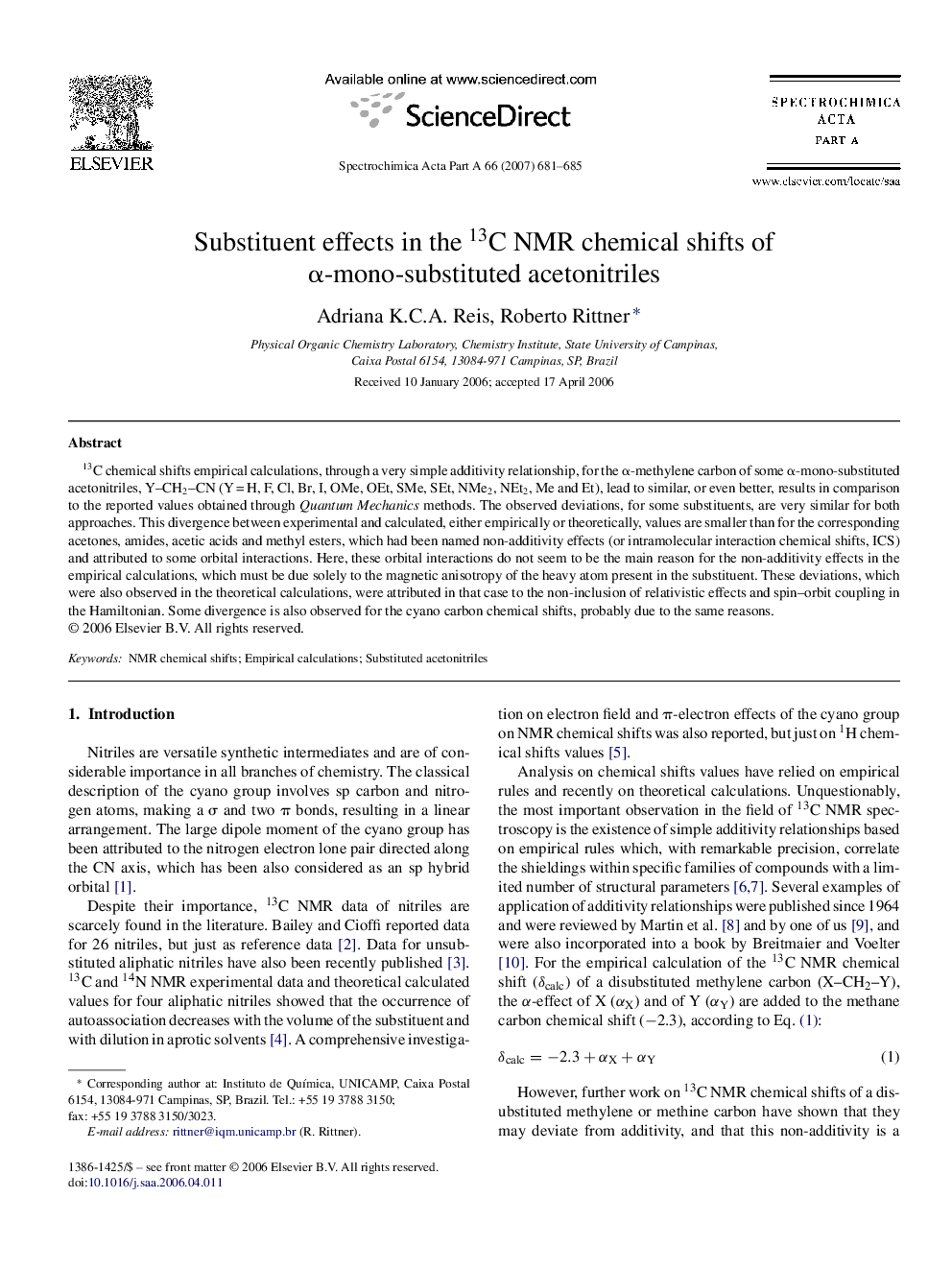| Article ID | Journal | Published Year | Pages | File Type |
|---|---|---|---|---|
| 1235787 | Spectrochimica Acta Part A: Molecular and Biomolecular Spectroscopy | 2007 | 5 Pages |
Abstract
13C chemical shifts empirical calculations, through a very simple additivity relationship, for the α-methylene carbon of some α-mono-substituted acetonitriles, Y-CH2-CN (Y = H, F, Cl, Br, I, OMe, OEt, SMe, SEt, NMe2, NEt2, Me and Et), lead to similar, or even better, results in comparison to the reported values obtained through Quantum Mechanics methods. The observed deviations, for some substituents, are very similar for both approaches. This divergence between experimental and calculated, either empirically or theoretically, values are smaller than for the corresponding acetones, amides, acetic acids and methyl esters, which had been named non-additivity effects (or intramolecular interaction chemical shifts, ICS) and attributed to some orbital interactions. Here, these orbital interactions do not seem to be the main reason for the non-additivity effects in the empirical calculations, which must be due solely to the magnetic anisotropy of the heavy atom present in the substituent. These deviations, which were also observed in the theoretical calculations, were attributed in that case to the non-inclusion of relativistic effects and spin-orbit coupling in the Hamiltonian. Some divergence is also observed for the cyano carbon chemical shifts, probably due to the same reasons.
Related Topics
Physical Sciences and Engineering
Chemistry
Analytical Chemistry
Authors
Adriana K.C.A. Reis, Roberto Rittner,
